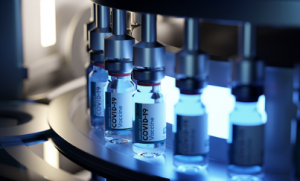Medicinal bottles are containers for medicine and other pharmaceutical products. They were popular during the 1860s, 1870s, and 1880s. Today they can be found in pharmacies and medical facilities. In addition, these bottles may have child-resistant features, and for example, certain medications and creams must be contained in vials or pill bottles with child-resistant closures.
Medicinal bottles were popular during the 1860s, 1870s, and 1880s
In the 19th century, medicine bottles were popular. They provided relief for a variety of ailments. Many were recommended by neighbours, physicians, and printed advertisements.
 Patent medicines were famous for their promise to cure a range of illnesses without the assistance of a physician. But, besides the obvious health benefits, they also offered a more practical use – the chance to avoid prejudiced doctors and healthcare workers. Learn more about supplement packaging.
Patent medicines were famous for their promise to cure a range of illnesses without the assistance of a physician. But, besides the obvious health benefits, they also offered a more practical use – the chance to avoid prejudiced doctors and healthcare workers. Learn more about supplement packaging.
However, it’s a good bet that consumers must have precisely followed the directions on the labels. Moreover, while patent medicines are widely touted, several studies show they are frequently used in ways the producers do not intend.
These patent medicines had their advantages. For example, many of them were relatively inexpensive. They were also accessible to the public, allowing for greater variety. Some were prescribed by a physician, while others were more commonly purchased over the counter.
However, many assume these medicines were ineffective or at least a relic of the past. The truth is that the majority of patent medicines were effective.
Combining multiple remedies is the most efficient way to treat a medical condition. The best way to determine which mixtures are most effective is to perform a chemical analysis. It can identify which ingredients are no longer considered medicinal.
Although the medicinal properties of some of these medicines are still debated, the popularity of the patent medicine bottles during the 1860s, 1870s, and 1880s indicates that people were taking care of themselves. And, while it’s impossible to know precisely how medicines were dispensed in dispensaries, hospitals, and other health institutions, it’s safe to say that they had their uses.
Typical uses of medicine bottles
The use of medicine bottles during the mid-19th century was quite widespread. Tens of thousands of different medicines were packaged in these bottles. These bottles were produced in several dozen different moulds, and some were embossed with the product’s name. But most were not.
Medicine bottles came in many styles and shapes. They were used in both the medical and pharmaceutical industries. A wide variety of finishes can be found on early bottles. Most were made in cup-base or post-bottom moulds.
Throughout the era, the primary personal concern was health. As a result, many bottles had a narrow neck that was most convenient for pouring out liquid content.
Some medicines were manufactured in ointment form. Ointment bottles were wider than medicine bottles, and balsams were also common in the 19th century. These products were based on “healing” resins from balsam trees in Central and South America.
During the first quarter of the 20th century, patent and proprietary medicines emerged, and these medicines were packaged in round or cylindrical bottles. Drugstores sold these bottles with moderate-width bodies and short necks.
Patent and proprietary medicines were often embossed with the product’s name. Round prescription bottles were more popular during the 1860s and 1880s. Often the embossing needed to be incorporated into the bottle’s design.
Another popular type of medicinal bottle is the LINDSEY’S COUGH BALSAM. This medicine was produced from the mid-1870s to the mid-1930s, and it has an indented panel and a flat label panel. Learn more about supplement packaging.
Emojis were often produced as early as 1836. They were in a variety of colours and were usually made in pontiled bottles. Later, these bottles were also built on smooth bases.
The number of medicinal bottles produced in the era is astounding. Even if you are familiar with some of these types of bottles, you may need to learn that the varieties are so varied.
Medicinal bottles must pass 661.1 plastic packaging systems and their materials of construction.
The United States Pharmacopeia has created a series of standards for assessing polymer materials. Plastic packaging systems are a significant focus of these standards. In particular, they address the safety aspects of packaged drug products.
It includes addressing the quality of materials and their interaction with the product. Many materials are used in pharmaceuticals, from plastics and rubber to metals and glass. These can be processed and reused to minimise costs. However, the use of these materials must be analysed for the appropriate chemical and biocompatibility.
For example, glass is an ideal material in some circumstances. It is easy to sterilise, and it has a suitable barrier property. However, it can break or delaminate with certain conditions, such as vial size or ionic strength. Glass is transparent and may be used to store or dispense medications.
In the meantime, FDA regulations define the safety of rx pill bottles. In particular, packages must be child-resistant and meet moisture permeation requirements for Class B containers.
Physicochemical tests are designed to measure the properties of plastic materials. In particular, extractable and leachable are tested. Some of these tests are specific to the type of material, while the type of drug product defines others.
Another way to test for the rx pill bottle is by using thermal analysis. A differential scanning calorimeter is employed to perform this test. Again, the correct procedure ensures the plastic is compatible with the pharmaceutical product.
The testing process also depends on the composition of the packaging system. For example, if the system is made up of approved products, there is no need to do additional testing.